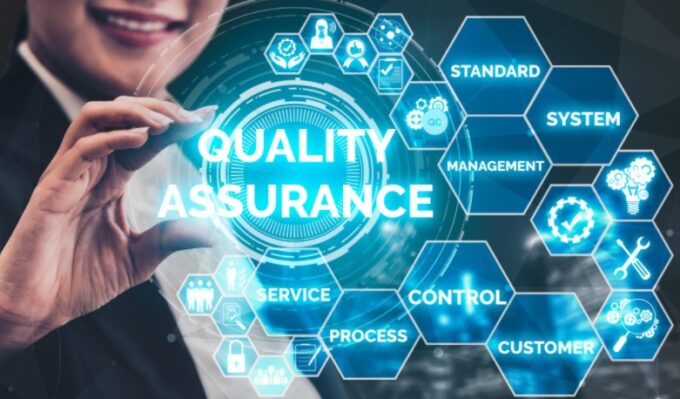Strong supply chains are essential for every business’s health. Thanks to technology, today’s stakeholders can dive deep into their supply chains and ensure they’re functioning at maximum efficiency.
The advent of industrial internet of things (IIoT) solutions and other innovative tech has helped the delicately balanced processes in the supply chain work together. By deploying networks of interconnected sensors in manufacturing, storage and shipping environments, business leaders have been able to gain unprecedented visibility into what’s happening throughout their supply chains.
However, aside from advanced technology, every strong supply chain possesses four important characteristics. Here they are in no particular order.
Quality Assurance

You can read more about this topic elsewhere on the web, but at its essence, supply chain quality assurance is a combination of multiple processes that work together to ensure goods are delivered in a safe and timely fashion. In some industries, such as food and healthcare, quality assurance is a core feature of the supply chain.
After all, the goods in those industries are worthless if damaged, not to mention potentially fatal. Quality assurance begins with data tracking. Whether it’s monitoring assembly line machine usage data or condition-related data, stakeholders measure and record everything.
For instance, manufacturers closely track the storage conditions of their warehouses to ensure they’re handing goods over to logistics partners in optimal conditions. Tracking of this sort ensures that goods are safe for transport. The data collected also ensures that in case of damage, insurance liability is appropriately determined. High insurance premiums can wreck profit margins in a notoriously low-margin industry.
Goods tracking goes beyond GPS data. Conditions during transport such as light, humidity, and shock are measured in real-time. This degree of tracking ensures that shippers can quickly react to potentially dangerous conditions and notify the logistics vehicle immediately.
In the case of overseas shipments, IoT-powered smart containers take quality assurance to another level, ensuring goods are always stored in the right conditions. By enforcing minute condition tracking in this manner, supply chain stakeholders can ensure the goods consumers receive are safe for consumption.
Analytics

Data collection is the first step in a strong supply chain. Putting it to use and crunching it on analytics platforms is the next. Analytics platforms play an important role in modern supply chains by helping stakeholders identify potential bottlenecks well in advance.
A good example of the role analytics plays is route mapping. Designing optimal delivery routes is challenging, even when shipping in bulk. Firms have to take weather, geopolitical, and shipment-related conditions into account. Adding to the complexity are varied customs and regulations en route.
Improper storage in a customs shed will render goods useless, even if the distance the shipper covers is the smallest. Data insights can help shippers discover the best routes by quickly considering all factors.
If you’re working in an operation that’s large enough in scale, you may even be able to use machine learning algorithms to predict the most efficient route in any specific situation.
Vendor performance is another variable that supply chain companies must consider before allocating an order or designing a route. By having easy access to data signals which speak to different contractors’ dependability in different situations, business leaders can determine to whom to turn the next time.
Integrating data from various sources helps stakeholders design the most efficient processes. The result is a resilient supply chain that can withstand almost every circumstance.
Demand Planning

In a bid to discover higher levels of efficiency, manufacturers have adopted just-in-time manufacturing. This model places a great deal of strain on the supply chain, however, because raw materials must be delivered at specified times. Fail to do so, and the entire production schedule is compromised, affecting the consumer too.
Given all of the supply chain “crisis” disruptions of the past two years, the just-in-time approach may have outlived its utility, and today’s firms are looking for more predictable models so they can plan more in advance.
Demand planning helps manufacturers communicate appropriate deadlines to their supply chain partners, ensuring procurement and raw material logistics run without a hitch. Analytics once again plays a central role in this function.
When planning demand, manufacturers take historical demand data, supplier performance metrics, and logistics vendor metrics into account. Manufacturing-related data is also incorporated, following which firms stress test their projections.
These processes allow manufacturers to take a variety of conditions into account and accurately predict manufacturing output. In turn, these models are used by marketing and sales teams to drive demand to appropriate levels.
Demand planning is a complex task and technological advances are making the task much simpler. Whatever the degree of technological sophistication, there’s no doubt that demand planning is an essential task in the supply chain since it drives all downstream activities.
Transparent Policies

The average supply chain is a delicately balanced collection of processes. Manufacturers, raw material suppliers, logistics vendors, shippers, delivery drivers, retailers, and last-mile shippers come together to create a complex web of processes that can go awry at the slightest provocation.
Communication is all-important in such a complex web. Transparent policies and standardized communication help all stakeholders remain on the same page. The high degree of visibility in modern supply chains makes communication simplers. For instance, manufacturers can track the health of their shipments and set safety thresholds.
If breached, they can alert shippers and every other stakeholder of potential problems, thereby giving everyone insight into the situation. Communication of this kind also creates a detailed audit trail that gives all stakeholders insight into potential problems down the road.
When everyone has access to the same data trail, it’s even possible to code smart contracts to ensure that all parties along the chain are held accountable for what happens to goods and materials on their watch.
Complex Processes for a Single Goal

The ultimate goal of any supply chain is to deliver goods in a safe and timely fashion. Technology powers the four elements discussed in this article, and consumers can rest assured that their goods have been shipped and delivered under the highest safety standards. In turn, these processes reduce waste and minimize losses for all supply chain stakeholders.









